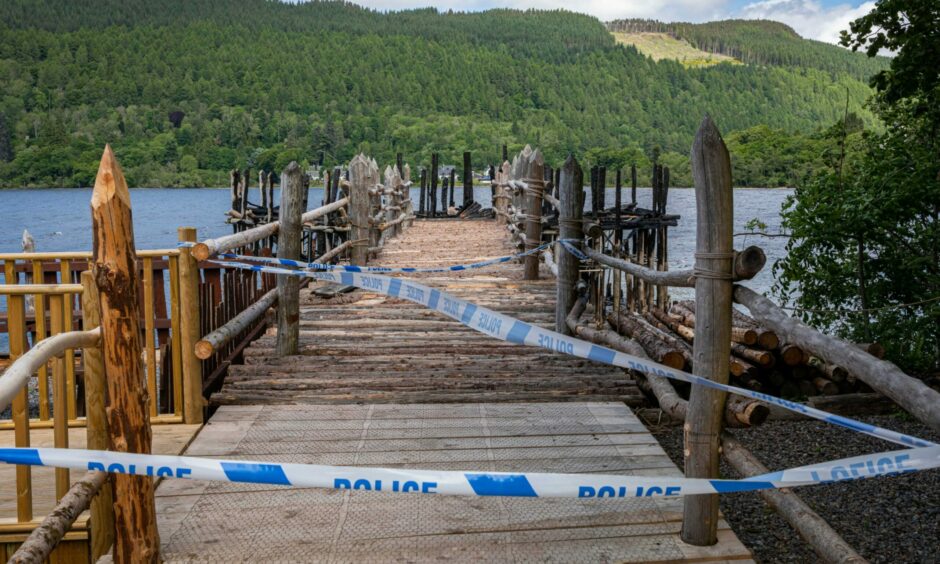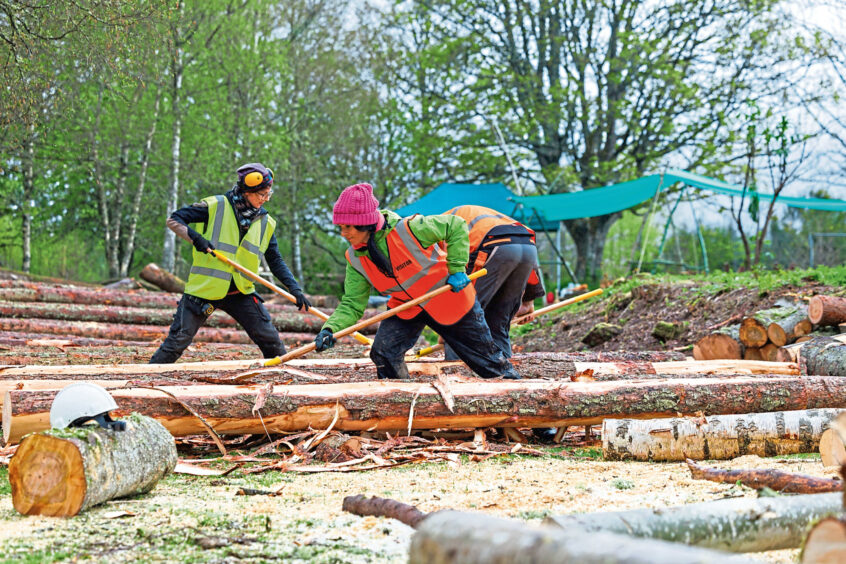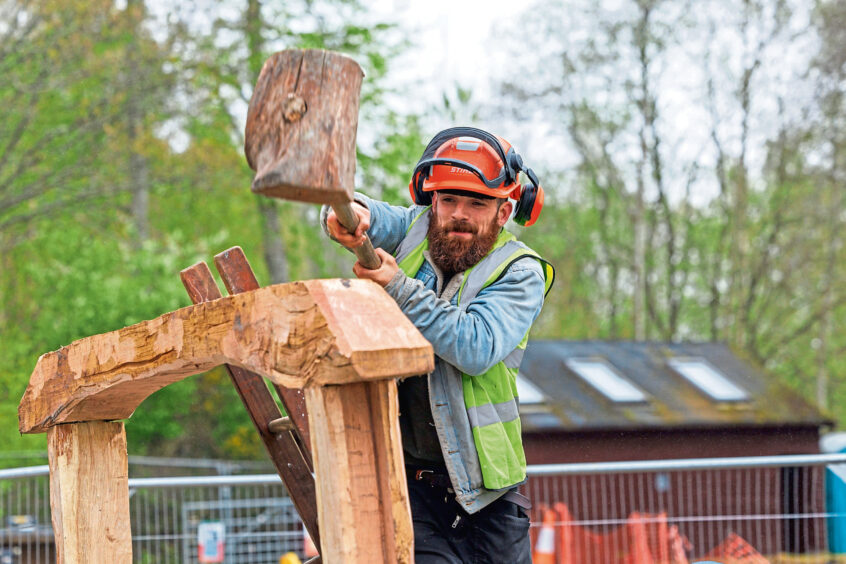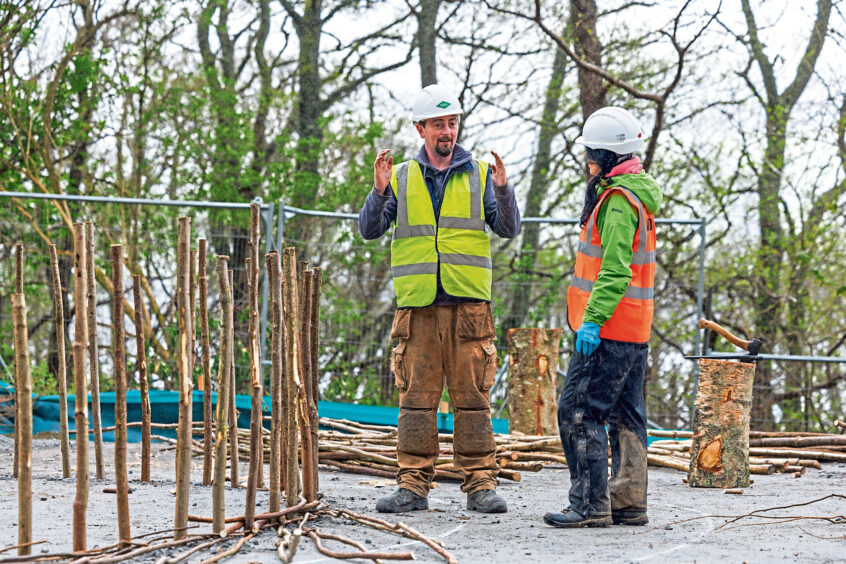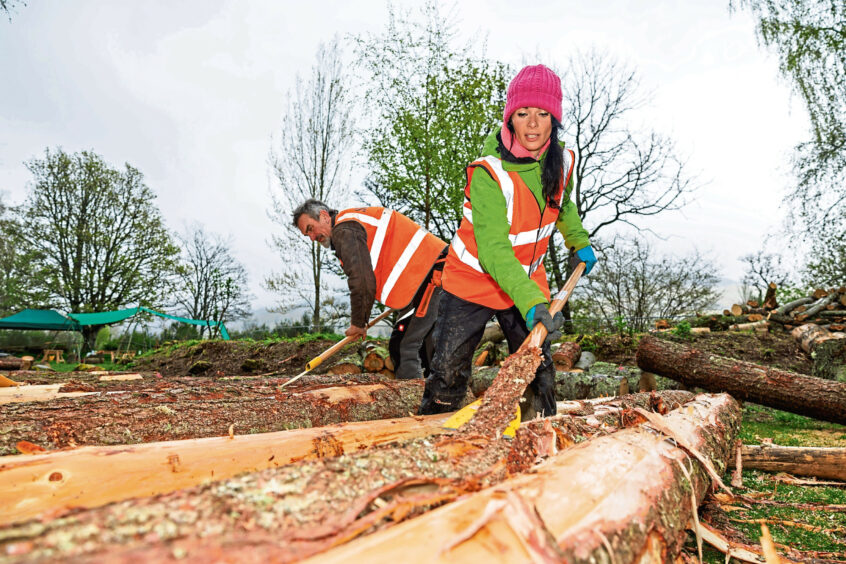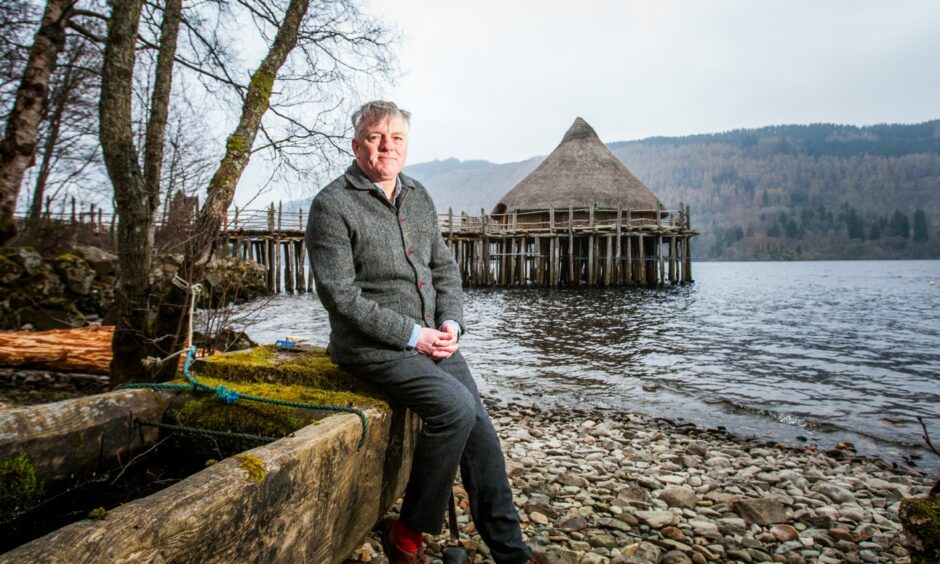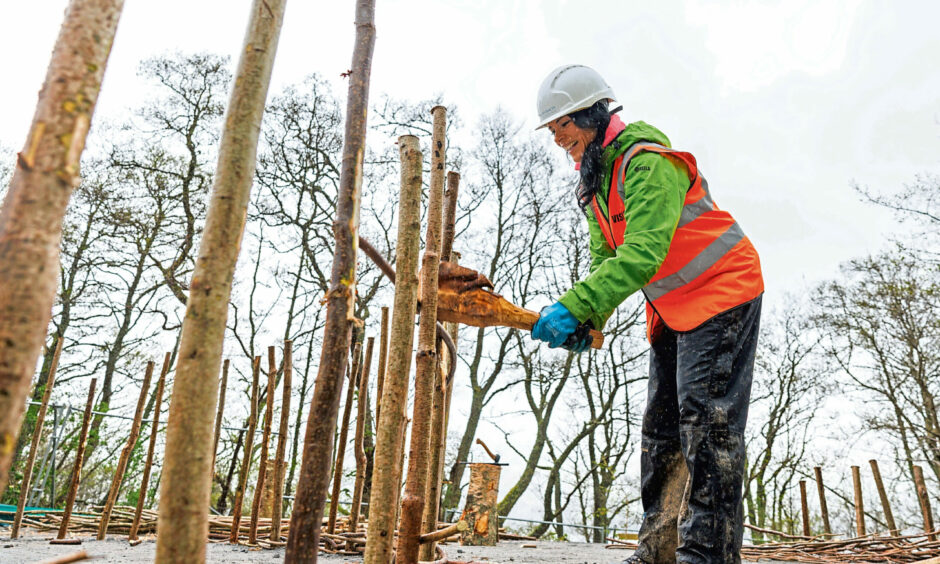
It’s two years since fire ripped through the Scottish Crannog Centre in Perthshire, depriving the community of a much-loved icon.
The late-night inferno devastated the centre’s most iconic feature – a reconstructed Iron Age dwelling that had stood on stilts in Loch Tay for 25 years.
“It was gone in six minutes,” lamented centre director Mike Benson as he stood beside the smouldering wreckage later that evening – on June 11, 2021.
When I visited in the aftermath, I was relieved to hear that nothing of value had been lost.
The museum’s collection of artefacts, some from around 2,500 years ago, remained intact. The mock prehistoric village on the shore, visitor centre and shop also survived.
I was also relieved to hear Mike and his staff, while shocked and sad about what had happened, were looking to the future with enthusiasm, insisting that the fire was “part of the story, not the end of the story”.
Scottish Crannog Centre rebuild lets ‘living museum’ rise like a phoenix
It seemed that soon, the centre would rise like a phoenix, quite literally, from the ashes.
Planning had already been under way for a £12.5 million redevelopment of the centre on the north side of the loch at Dalerb when the blaze took hold.
And while the old centre continued to deliver the magic, the hope was that plans to open the new one could be fast-tracked.
With the new centre expected to open this October, I popped along to see how things were coming on. I was honoured to be asked to help build the new Iron Age village.
How do you build a Crannog?
I met a range of craftsfolk, including carpenters, woodworkers, archaeologists, and builders. They are all passionate about using locally-sourced materials and traditional building methods.
My first task was to help debark massive larch logs, which will ultimately be used to build shelters for woodworking and other skills workshops.
The debarking involved using long sticks with sharp axe-like bits at the end, and more or less scraping the bark from the trunk. It was tough, sweaty work – a brilliant workout.
Transforming hazel into rope to build Crannog walls
I also got the chance to work alongside Brendan O’Neill, assistant professor at the School of Archaeology at University College Dublin. He’s part of a team making sure the buildings are historically accurate and meet current building standards.
The team had just installed the door frame of the new roundhouse and our job was to weave the walls from coppiced hazel “rods”.
“I’ll show you how you can make a house that’s so big, carrying three or four tonnes of thatch, above your head, out of sticks,” smiled Brendan.
“We’re going to do a very special weave that essentially turns the hazel into a rope. The more pressure we put on it, the tighter it grips, and so because there’ll be a massive amount of pressure from the roof – three or four tonnes – we want the lower walls to fight against that.”
He then explained how to lay the hazel rods in patterns, and weave them in a sequence, in a “very particular way”.
It’s fairly simple, but you need to have your wits about you. Put it this way, I was glad Brendan kept an eye on me.
Once I’d got the hang of it, and twisted in a few rods, Brendan showed me how to bang them firmly into place with a wooden hammer.
Why Scottish Crannog Centre rebuild needs redone every 7 years
The Scottish Crannog Centre team will need to rebuild the roundhouse, and all the associated buildings, in around seven years. They hope to to train a new generation of craftspeople to do that.
“Research has shown that these type of houses, in the Iron Age, would last around seven years. So that’s how long this one will last,” said Brendan.
“The people who return to build a new one will be equipped with all the skills, plus, there’s plenty of raw material available here, with forests of hazel and larch nearby.”
Mike was keen to tell me about the mission to keep the “integrity” of the buildings, telling me about the “harvest zone”. You can find that on Drummond Hill, allowing the team to grow the materials they need.
Mike said: “We’re growing our materials and we’re growing our skills so that when it’s time for the building to come down, we’ll build another one.
“That’s how we keep these skills alive. It’s about building a legacy. The new museum will be more organic and more sustainable.
“It’s not just a case of build and walk away. It’s about maintaining and expanding these skills – that’s why it’s called a ‘living museum’.”
Mike said the new site offers an “amazing opportunity” to tell the crannog’s stories – “bigger, better and more in-depth”.
“Yes, we had our tears with the fire, two years ago,” he said. “But the plan had always been to move, as we had outgrown the old site.”
How you can get involved…
The Scottish Crannog Centre team say there’s plenty of work needed before the site opens in autumn. Mike and assistant director Rich Hiden are looking for volunteers.
“We’ve had hundreds helping with the build already, but we’re always looking for more,” said Rich.
“There’s everything from dry-stane walling to weaving, making benches and wooden shelters – all the ancillary stuff.
“We’re here to tell a story, and we want the community to get on board.”
It’s not just a case of build and walk away. It’s about maintaining and expanding these skills – that’s why it’s called a ‘living museum’.”
MIKE BENSON
The new centre will feature an Iron Age settlement with seven buildings. That includes the roundhouse, three crannogs (reconstructions of stilted loch dwellings), skills shelters and a living history museum. An artists’ hub, performance space, cafe, restaurant and gift shop completes the refreshed attraction.
There will also be a forest garden, with food grown there used in the cafe.
- The centre aims to be the most sustainable museum in Scotland. It uses thatch from the Tay and timber from nearby Drummond Hill.
- For updates, or for details on volunteering, see crannog.co.uk or the Scottish Crannog Centre’s Facebook page.
